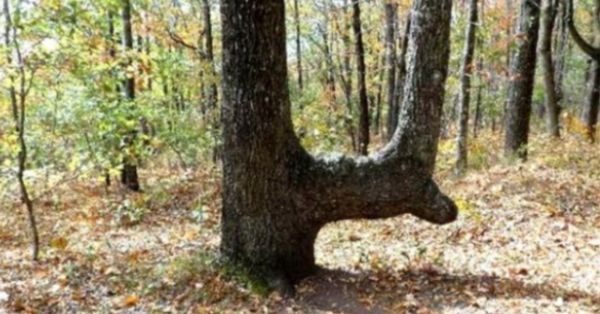I can’t imagine going on a road trip without a GPS these days. It’s a testament to how much technology has become ingrained in our lives. It’s fascinating to think about how people navigated before GPS and maps were widely available. In fact, there is a captivating story behind bent trees that uncovers hidden secrets of nature.
According to the national American Forests website, if you come across a tree with an odd shape or a kink in its trunk, chances are it’s not just a random quirk of nature. These oddly shaped trees were actually used as landmarks by indigenous people to guide their way. Native Americans would intentionally bend young trees to create permanent trail markers, indicating safe paths through rugged terrain. These bent trees pointed travelers towards water sources, food, and other important landmarks. Over time, the trees grew, maintaining their original shape, all while their purpose was slowly forgotten as modern life took over.

Today, we may not rely on these “trail trees” for navigation, but their historical significance is immeasurable. Just imagine the stories these trees could tell if they could talk! While it’s true that nature produces its fair share of bent and oddly shaped trees, there are specific characteristics that distinguish the man-made bent trees from those created by Mother Nature alone.
For instance, take a close look at the image above. The tree has a prominent nose or notch at the end of its bend. This distinctive feature is a result of Native Americans growing the tree around a section of the tree that was inserted into a hole. Additionally, if you examine the top of the tree’s inner bed, you’ll notice scars from where straps were placed when the trees were young.
These trail trees have stood the test of time, some dating back 150-200 years. However, as human activities continue to pose a threat to nature, these remarkable pieces of history are also at risk. The growing population and the ever-increasing demands on our natural resources may eventually lead to the demise of these unique trees.
That’s why the Mountain Stewards website was created. In an effort to preserve and celebrate this extraordinary part of American history, the site has mapped out over 1,000 bent trees across the country, documenting their exact locations. It’s a call to both the young and the old to venture into the woods and experience these captivating pieces of history before they disappear forever. So, if you ever find yourself in the presence of a bent tree, take a moment to appreciate the stories it holds and the rich heritage it represents. And remember, there’s more to our forests than meets the eye!






